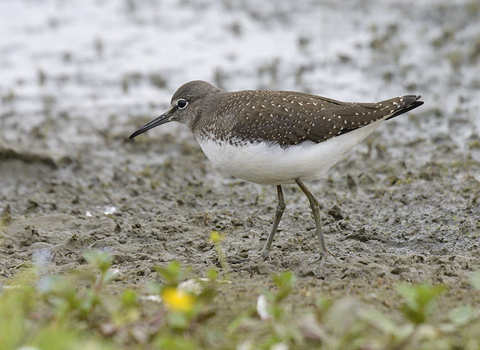
Green sandpiper ©John Bridges
Green Sandpiper
The green sandpiper is a very rare breeding bird in the UK, and is mainly seen on migration in autumn. Look out for it feeding around marshes, flooded gravel pits and rivers. It even likes sewage works!
Scientific name
Tringa ochropusWhen to see
July to MarchSpecies information
Category
Statistics
Length: 21-24cmWingspan: 59cm
Weight: 75g
Average lifespan: up to 10 years
Classified in the UK as Amber under the Birds of Conservation Concern 5: the Red List for Birds (2021). Protected in the UK under the Wildlife and Countryside Act, 1981.
